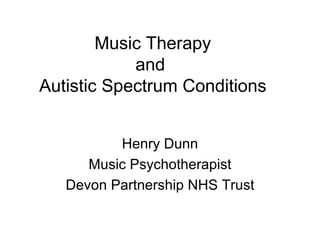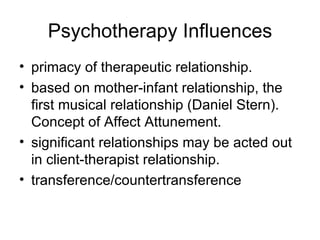Music therapy can help people with autism spectrum conditions in several ways. It provides an additional form of communication and allows clients to express themselves creatively. The relationship between client and therapist is fundamental, and can act as a template for other relationships. Music therapy addresses the core impairments of autism by facilitating social interaction, communication, and imagination in a structured yet free environment. Case studies demonstrate how music therapy creates a safe space for clients to explore and express emotions, develop trust, and reduce anxiety and problematic behaviors.

































